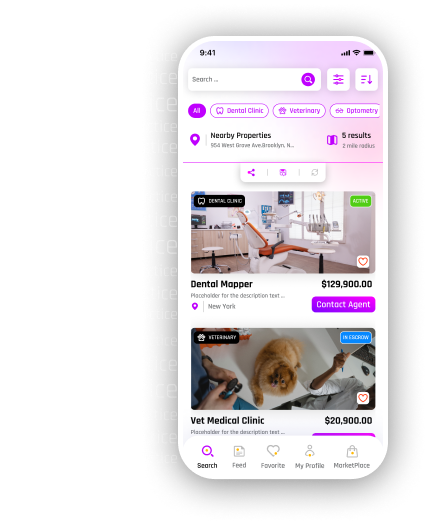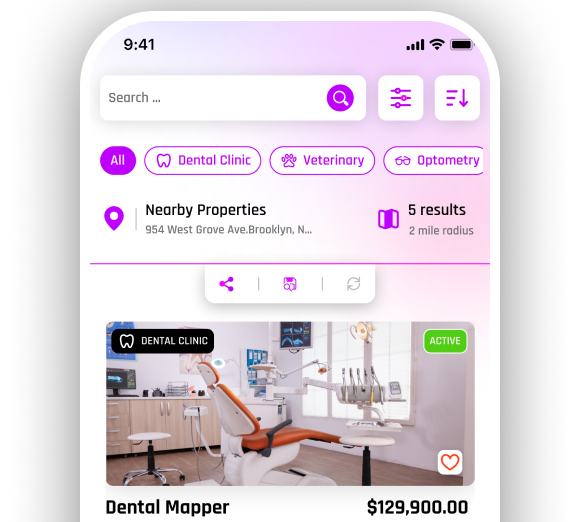From Vet School to Ownership: The Fastest Path to Becoming Your Own Boss

Becoming a veterinarian requires years of education, sleepless nights, and an unwavering passion for animal care. But for many new graduates, the dream doesn’t stop at practicing medicine—it extends to owning a clinic and building a legacy. Moving from vet school to ownership is both exciting and challenging, demanding a balance of medical expertise and entrepreneurial mindset. While some professionals spend decades working for others before starting a practice, others are looking for ways to fast-track the process. Whether through mentorship, financial preparation, or acquiring a veterinary clinic for sale, the fastest path to becoming your own boss is possible with the right strategy.
In this blog, we’ll explore the steps, challenges, and smart moves that can accelerate your journey from fresh graduate to practice owner.
Why Ownership Should Be on Your Radar Early
For many veterinarians, ownership feels like a distant milestone, but starting early has clear advantages:
-
Professional freedom: You’ll be in charge of treatment approaches, technology adoption, and client service models.
-
Financial growth: Owning your practice allows you to build equity and wealth that simply isn’t possible as an associate.
-
Work-life balance: While demanding at first, ownership eventually offers flexibility in scheduling and workload management.
-
Long-term stability: Rather than worrying about contract renewals or limited career mobility, you’ll have a business that grows with you.
In short, ownership is not just about financial gain—it’s about creating an environment where your passion for animal health and your personal vision can flourish.
Step 1: Define Your Career and Ownership Goals
Before diving into ownership, clarity is everything. Ask yourself:
-
Do I want to run a small local clinic, or do I envision a larger hospital with multiple specialties?
-
Am I open to partnering with others, or do I prefer solo ownership?
-
What kind of community do I want to serve?
This vision will shape your decisions—whether you start your own practice from scratch or explore opportunities like buying an established veterinary hospital for sale. Knowing your long-term goals helps you avoid impulsive moves and positions you to make smarter investments.
Step 2: Gain Real-World Experience
No matter how eager you are to become an owner, experience is non-negotiable. Working as an associate veterinarian provides exposure to patient management, client communication, and business operations. Pay close attention to:
-
How scheduling is handled.
-
The role of support staff and team dynamics.
-
Financial workflows like billing, inventory, and payroll.
-
Client loyalty strategies.
Consider these years as your “business residency.” They’ll teach you not just how to treat animals but also how to treat your practice like the valuable asset it will become.
Step 3: Master the Business Side of Veterinary Medicine
Ownership means balancing patient care with running a business. Unfortunately, vet school rarely covers management or finance in depth, leaving new graduates underprepared. Invest time in learning about:
-
Financial literacy: Budgeting, debt management, and revenue forecasting.
-
Human resources: Recruiting, training, and retaining staff.
-
Client relations: Marketing, communication, and community engagement.
-
Compliance: Local regulations, licenses, and insurance.
Workshops, online courses, or even mentorship under experienced owners can fill the knowledge gaps quickly. Understanding these essentials ensures that when you step into ownership, you’re confident in both medicine and management.
Step 4: Decide—Start Fresh or Acquire an Existing Practice?
When the time comes to transition into ownership, you’ll have two main paths:
Starting Fresh
-
You control everything—location, branding, layout, and services.
-
The challenge lies in building a client base from scratch.
-
Higher initial investment in equipment, lease, and marketing.
Acquiring a Practice
-
You inherit an existing client base and trained staff.
-
Financial records give you insights into growth potential.
-
Upgrades and rebranding may be needed.
Many new vets prefer acquisition, as it shortens the time needed to establish profitability. If you choose this route, explore listings for opportunities such as a veterinary practice for sale that aligns with your goals, budget, and community vision.
Step 5: Secure Financing Early
The cost of ownership is often the biggest hurdle. Veterinary practices can range anywhere from hundreds of thousands to millions depending on size and services. To speed up your journey:
-
Build good credit as early as possible.
-
Work with lenders who specialize in healthcare or veterinary practices.
-
Consider partnerships or investors if full ownership is financially difficult.
-
Look into small business loans, equipment financing, or grants.
Being financially prepared ensures that when the right opportunity arises, you can act quickly.
Step 6: Build a Support Team
Even the most skilled veterinarians can’t run a practice alone. Successful ownership comes from surrounding yourself with the right people:
-
An accountant familiar with healthcare businesses.
-
An attorney to handle contracts, leases, and compliance.
-
A practice consultant or mentor.
-
A reliable real estate agent for finding suitable properties.
This support system helps you avoid mistakes, negotiate better deals, and stay focused on growth rather than paperwork.
Step 7: Embrace Technology and Innovation
Modern veterinary care is evolving rapidly, and clients expect cutting-edge services. To gain a competitive edge early:
-
Invest in digital record systems.
-
Offer online booking and telemedicine consultations.
-
Use modern diagnostic tools that improve efficiency.
-
Create a strong online presence through social media and reviews.
Clients are more likely to trust and stay with a clinic that embraces innovation while maintaining compassionate care.
Step 8: Prepare for Lifestyle Adjustments
Ownership is rewarding, but it’s not without sacrifice. Be prepared for:
-
Longer work hours during the initial years.
-
Stress from managing finances, staff, and patients.
-
A steep learning curve in balancing clinical and business responsibilities.
However, the payoff is significant—over time, you’ll enjoy flexibility, control, and the satisfaction of building something meaningful.
Your Path to Independence
The journey from vet school to ownership isn’t easy, but with determination and the right plan, it’s achievable faster than many imagine. By defining your goals, gaining experience, understanding the business side, and exploring opportunities like acquiring a veterinary practice for sale, you can transition from employee to owner with confidence. Ownership means freedom, financial security, and the ability to create a practice that reflects your values.
If you’re ready to move from student or associate to successful practice owner, don’t wait. Start planning, networking, and exploring opportunities today. Whether you dream of opening a clinic or buying an established practice, the road to independence is closer than you think.
And when the time comes to make that leap, PracticeFinder app can help you discover listings, compare opportunities, and connect with trusted transition advisors—making your path to ownership smoother and faster. Download it today and start shaping the future you deserve.

